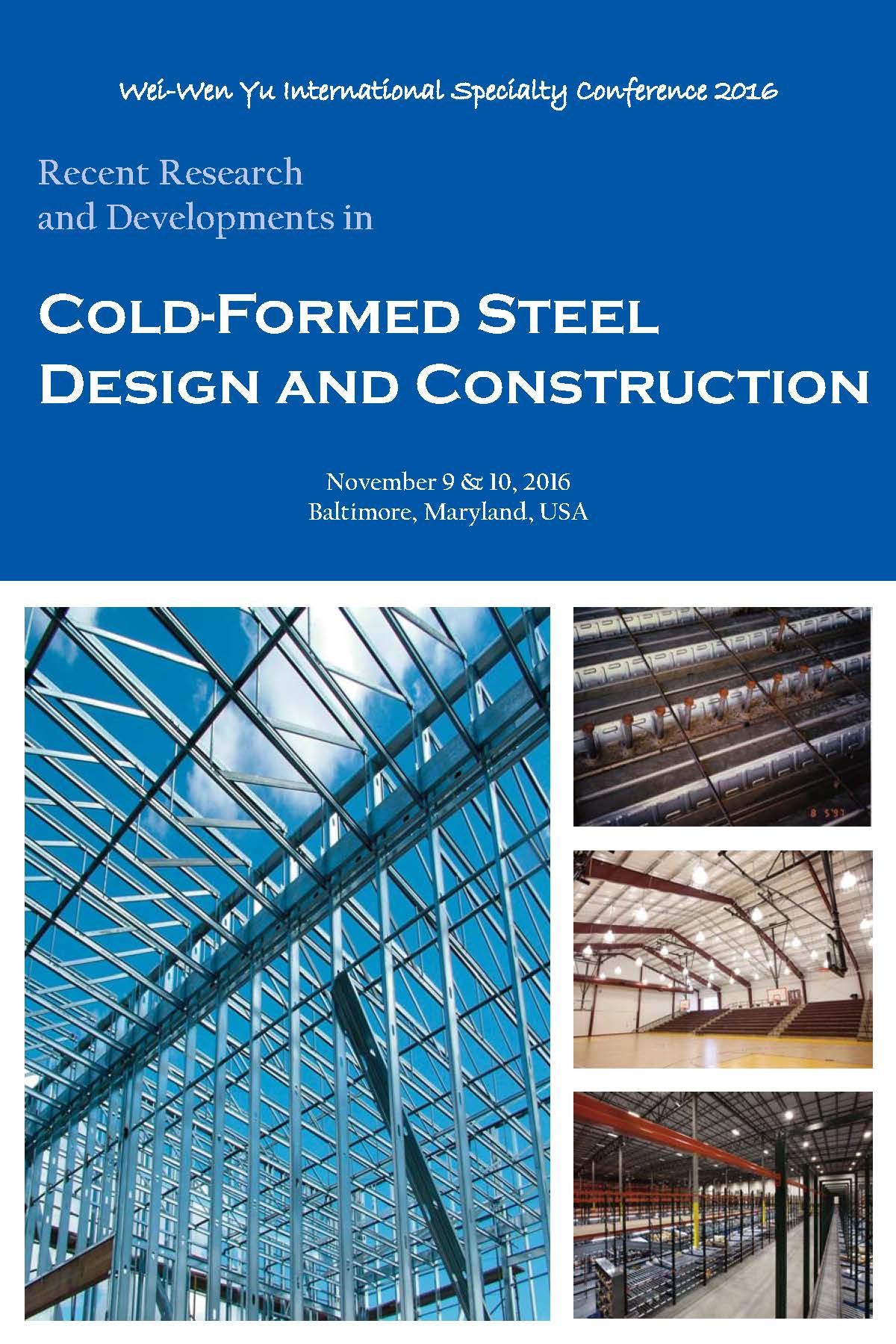Session Dates
10 Nov 2016
Abstract
This paper discusses an advanced finite element model able to simulate the structural response of cold-formed steel walls during standard fire tests. The model includes experimental thermo-mechanical properties of materials, geometric imperfections, and temperature distributions on studs and sheathing boards. The model is capable of reasonably predicting the thermal bowing of walls, and estimating the shape, size and amount of joint openings between gypsum boards over time of fire exposure. Numerical results validated with experimental data indicate that the maximum out-of-plane displacements due to thermal gradients occur near the wall mid-height. Early in the heating process, joint openings develop on the exposed side of walls due to thermal bowing and contraction of gypsum boards at elevated temperatures, potentially altering the heat transfer and affecting the fire resistance of the entire system. Future work aims to utilize high fidelity modeling to study the response of load bearing cold-formed steel systems subjected to fire, and optimize their fire resistance.
Department(s)
Civil, Architectural and Environmental Engineering
Research Center/Lab(s)
Wei-Wen Yu Center for Cold-Formed Steel Structures
Meeting Name
International Specialty Conference on Cold-Formed Steel Structures 2016
Publisher
Missouri University of Science and Technology
Document Version
Final Version
Rights
© 2016 Missouri University of Science and Technology, All rights reserved.
Document Type
Article - Conference proceedings
File Type
text
Language
English
Recommended Citation
Abreu, J. C. Batista; Punati, N.; Prasad, K. R.; and Schafer, B. W., "Advanced Modeling of Cold-Formed Steel Walls under Fire" (2016). CCFSS Proceedings of International Specialty Conference on Cold-Formed Steel Structures (1971 - 2018). 4.
https://scholarsmine.mst.edu/isccss/23iccfss/session9/4
Advanced Modeling of Cold-Formed Steel Walls under Fire
This paper discusses an advanced finite element model able to simulate the structural response of cold-formed steel walls during standard fire tests. The model includes experimental thermo-mechanical properties of materials, geometric imperfections, and temperature distributions on studs and sheathing boards. The model is capable of reasonably predicting the thermal bowing of walls, and estimating the shape, size and amount of joint openings between gypsum boards over time of fire exposure. Numerical results validated with experimental data indicate that the maximum out-of-plane displacements due to thermal gradients occur near the wall mid-height. Early in the heating process, joint openings develop on the exposed side of walls due to thermal bowing and contraction of gypsum boards at elevated temperatures, potentially altering the heat transfer and affecting the fire resistance of the entire system. Future work aims to utilize high fidelity modeling to study the response of load bearing cold-formed steel systems subjected to fire, and optimize their fire resistance.



